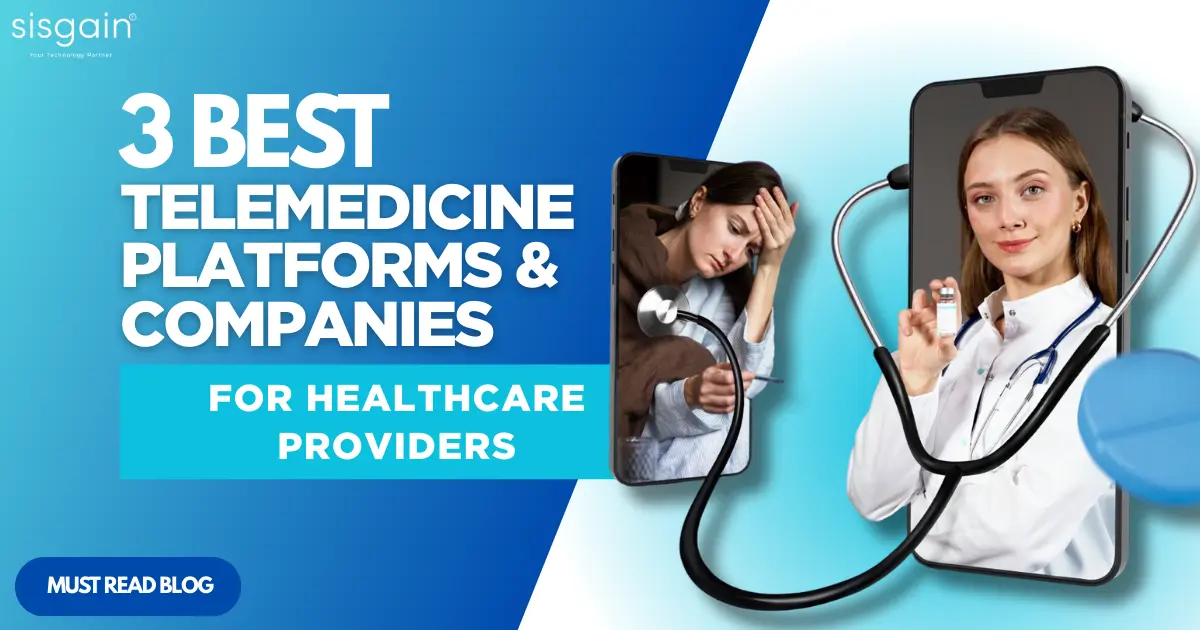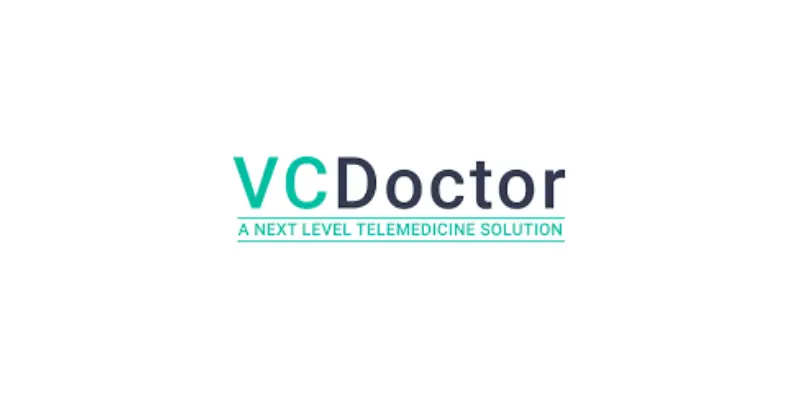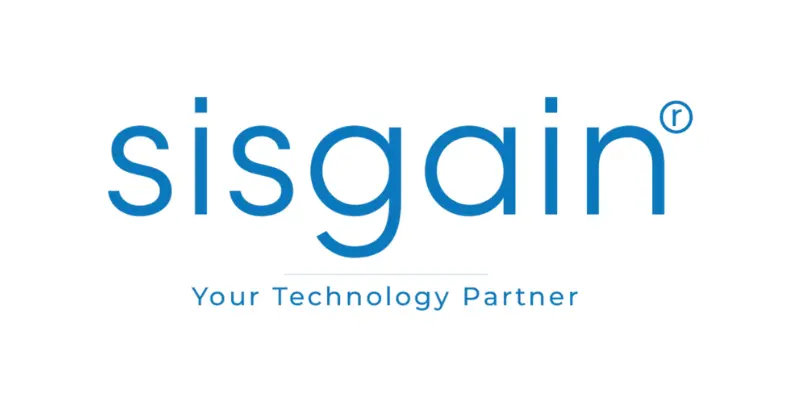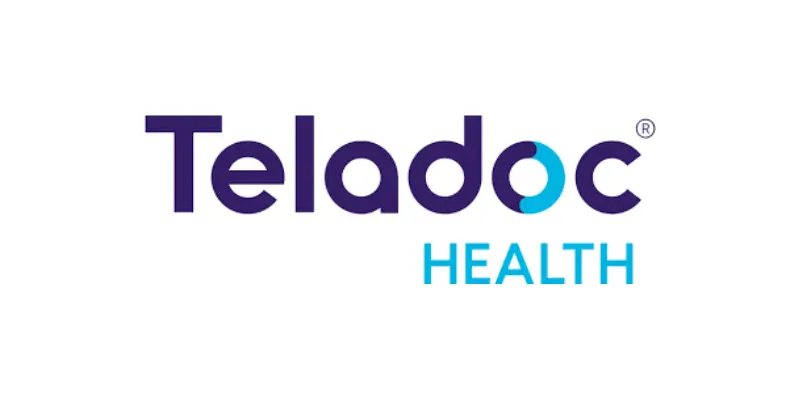Sales Team
Project quotes, partnerships, implementation

Telemedicine platforms have dramatically transformed global healthcare by connecting patients and providers remotely. During the COVID-19 pandemic, adoption accelerated worldwide as providers sought to maintain care delivery while patients stayed home. Today, the market is huge – valued at about $104.6 billion in 2024, projected to reach $111.9 billion in 2025, and expected to surpass $120+ billion by 2026 as virtual care becomes even more mainstream.
These platforms enable virtual visits via secure video calls, reducing patient travel and wait times while extending specialist access to underserved and remote areas. For example, one study found that telemedicine significantly improved chronic disease outcomes and patient satisfaction by making care more accessible.
By 2026, advancements such as AI-powered diagnostics, remote patient monitoring (RPM), wearable-driven health insights, and widespread 5G connectivity are further strengthening telemedicine adoption. Healthcare systems globally are using telehealth to reduce hospital readmissions, streamline clinical workflows, and deliver more preventive, continuous, and personalized care. As a result, telemedicine platforms are becoming an indispensable and central component of global healthcare delivery in 2026 and beyond.
What are Telemedicine Platforms?
Telemedicine platforms are software systems that enable healthcare providers to deliver medical care remotely through secure telecommunications technology. These platforms typically include encrypted video consultations, chat, file sharing, and other digital tools that support virtual care. Core features of modern telemedicine platforms include:
Seamless integration with Electronic Health Records (EHR) and medical billing systems is a key capability. With integrated EHR access, providers can review patient charts, lab results, imaging reports, and medication histories directly during the tele-visit. Leading platforms support interoperability standards like HL7 and FHIR, ensuring smooth data exchange between telehealth software and hospital systems for accurate documentation and improved workflow efficiency.
Many telemedicine platforms now include RPM features that support virtual management of chronic diseases. This may involve wireless health devices or mobile apps that send real-time vitals such as blood pressure, glucose, heart rate, oxygen saturation, or ECG data straight to the healthcare provider. Continuous monitoring helps clinicians detect issues early, receive alerts for abnormal readings, and automatically sync data into the patient’s medical record, improving long-term care outcomes.
Advanced telemedicine solutions often come with integrated scheduling tools, automated reminders, and digital billing features. Patients can book appointments online and make payments through secure gateways like Stripe, PayPal, or other healthcare-focused payment systems. Providers benefit from automated coding, insurance verification, and claims submission, reducing administrative burden and speeding up reimbursements.
Since telemedicine involves sensitive patient information, platforms must meet stringent privacy and security standards. Leading solutions are fully HIPAA-compliant in the U.S. and GDPR-compliant in the EU. They ensure end-to-end encryption, secure authentication, audit trails, and role-based access controls. Many offer Business Associate Agreements (BAAs) and multi-factor authentication to guarantee maximum data protection.
In practice, telemedicine platforms can vary widely—from simple video consultation apps to comprehensive, all-in-one healthcare management system. For example, a full-featured telehealth application may include secure video visits, e-prescribing, patient messaging, scheduling, digital forms, analytics, and patient portals—all built to strict HIPAA standards. Platforms like Doxy.me and Zoom for Healthcare focus primarily on secure video consultations, while all-in-one solutions like Updox and Amwell offer additional tools such as patient portals, text reminders, and coordinated care workflow.
Telemedicine platforms offer powerful benefits for patients, providers, and healthcare systems, becoming a core part of modern digital health delivery.
Recent studies continue to show that telemedicine software significantly improves patient outcomes, especially for chronic disease management. With easier follow-ups, remote monitoring tools, and AI-driven alerts, providers can intervene earlier in conditions like diabetes, hypertension, COPD, and heart disease.
In 2025–2026 analyses, patients using virtual care solutions reported higher satisfaction rates, reduced hospitalizations, and better long-term disease control. The convenience of video visits often leads to better patient engagement and consistent treatment adherence.
Virtual visits eliminate traditional barriers of distance, mobility, and transportation. Telemedicine connects rural and underserved patients to specialists who may only be available in urban hospitals. Recent global reports confirm that telehealth “enhances healthcare equity and closes provider gaps,” especially in regions with low specialist density. Telepsychiatry, in particular, has seen massive usage growth since 2024, providing timely mental health support to communities lacking local behavioral health resources.
Telemedicine dramatically increases clinical efficiency. Hospitals utilizing virtual e-consults have reported cutting response times by nearly 40–60% compared to in-person consults. With automated scheduling, AI note-taking, digital intake forms, and synchronized records, clinicians can see more patients in less time without compromising quality. 2026 data shows many organizations using telehealth experienced:
Some systems even reduced dependence on inpatient beds by shifting follow-ups and low-acuity care to virtual settings.
Telemedicine creates significant savings for both patients and healthcare organizations. Patients eliminate travel, parking, and waiting-room costs, while hospitals reduce unnecessary ER visits and administrative overhead. Newer studies (2025–2026) show substantial savings in fuel, time, and productivity loss for patients, along with lower operational costs for providers due to efficient scheduling and reduced facility usage. Providers also benefit from less commuting and improved use of clinic space.
Telemedicine platforms improve adherence thanks to their convenience and built-in tools like reminders, digital prescriptions, secure messaging, and quick follow-ups. Frequent virtual check-ins help patients stay on track with medications, lifestyle changes, and chronic care plans. Recent evaluations show virtual care reduces appointment no-shows significantly sometimes by over 35% and increases patient participation in long-term programs.
Physician well-being continues to be a major healthcare priority. Telemedicine supports this by offering more flexible schedules, reducing commute stress, and allowing hybrid care models. Surveys from 2025–2026 indicate that over 70% of doctors feel telemedicine helps improve workflow efficiency and lowers burnout when implemented effectively. With virtual tools handling routine tasks, clinicians can focus more on meaningful patient interactions.
Key Challenges of Telemedicine Platforms
Despite rapid growth and strong potential, deploying and scaling telemedicine platforms still comes with significant challenges—many of which have evolved with new regulations, technologies, and healthcare expectations in 2025–2026.
Regulations continue to vary widely across regions. In the U.S., state-by-state licensure remains one of the biggest barriers, although progress is being made through interstate compacts and digital health legislation. Still, many states require doctors to be licensed locally before providing virtual care.
Globally, cross-border telemedicine is limited due to differing medical practice laws, consent requirements, and telehealth standards. Data privacy rules—such as HIPAA, GDPR, and country-specific health data laws (India’s DISHA guidelines, Canada’s PIPEDA, etc.) are stricter than ever in 2026, requiring deeper compliance audits, encryption protocols, and consent systems. Ensuring adherence can delay implementation and increase costs for healthcare organizations.
While telehealth reimbursement improved after COVID-19, payment parity is still inconsistent across insurers and regions. Many payers reimburse virtual visits at lower rates, or only cover specific services (e.g., mental health or chronic care visits).
Healthcare systems warn that without consistent reimbursement policies, long-term telemedicine programs are difficult to sustain. In 2026, many hospitals still struggle with:
As policymakers adjust telehealth laws, reimbursement remains a major obstacle.
Technical Infrastructure Limitations
Reliable telemedicine requires strong internet speeds, stable devices, and adequate digital literacy.
In many rural and remote regions, broadband availability remains limited—recent U.S. data shows that millions in rural areas still lack high-speed internet, complicating video-based care. The issue is more severe in developing countries where connectivity gaps persist.
In addition, patients lacking smartphones, webcams, or technical knowledge struggle to participate fully in virtual care. Providers also need updated hardware, noise-free environments, and secure connections, which can be costly.
Despite improvements in FHIR and HL7 adoption, interoperability remains one of the top challenges.
Telemedicine software must integrate with EHR systems, lab systems, billing tools, and RPM devices—all of which often use different standards.
In 2026, many healthcare systems still face:
As one recent review noted, robust encryption and diverse data formats “continue to hinder interoperability, uniform standardization, and policy alignment.”
Deploying telemedicine changes daily clinical workflows—scheduling, triage, documentation, follow-ups, and patient onboarding.
Without proper change management, staff may resist digital transformation.
Clinicians must also learn effective "website manner,” manage multi-channel communication, and handle privacy concerns during virtual sessions.
In 2026, additional training is required for:
Secure telemedicine systems require significant investments in:
Cyberattacks targeting healthcare increased in 2025–2026, making telemedicine systems more vulnerable. Even HIPAA/GDPR-compliant platforms can be breached without adequate IT oversight. Maintenance costs, software upgrades, staff training, and cybersecurity audits contribute to ongoing expenses that many small clinics struggle to sustain.


Doxy.me is a widely used browser‑based telemedicine platform that enables healthcare providers to conduct secure video and audio consultations without requiring patients to download an app. It’s designed to be simple, accessible, and compliant with major privacy standards, making it a strong choice for small practices, solo clinicians, and budget‑conscious healthcare teams.
Features:
Doxy.me prioritizes ease of use and security. It works in any modern web browser, so patients can join appointments with a link — no downloads or accounts required. The platform includes a virtual waiting room and patient queue management, which helps structure telehealth visits efficiently. It supports HD video and audio (on paid plans), text and email invites and notifications, group calls, screen sharing, and customizable waiting rooms. Security features include HIPAA, GDPR, SOC2, and other global compliance standards, with end‑to‑end encryption and a free Business Associate Agreement (BAA) included — key for protecting patient data.
Pricing:
Doxy.me has a tiered pricing structure suitable for different practice sizes:
Pros:
Doxy.me stands out for its intuitive, browser‑based interface, which requires no downloads or installation, making it easy for patients of all tech levels to join consultations. Users consistently praise its security and privacy compliance — particularly the inclusion of a free BAA — and its budget‑friendly pricing compared with many enterprise telehealth platforms. Many providers appreciate the simple setup, reliable video quality, and straightforward patient experience.
Cons:
Despite its strengths, Doxy.me has limitations. The free tier lacks advanced tools such as screen sharing, and some users experience occasional technical issues like connectivity glitches or video/audio freezing, especially with weaker internet connections. Larger practices may find deeper customizations or EHR integrations limited compared with more robust platforms. Additionally, some advanced workflow or practice‑management features are only available at higher‑tier plans or through external integrations.
Ideal Use Case:
Doxy.me is ideal for solo practitioners, small clinics, therapists, and startup telehealth programs that need a simple, secure, and cost‑effective telemedicine solution. It’s especially useful for providers who want to get up and running quickly without complex installations or high setup costs.
Updox (Unified Communications + Telehealth)

Updox is a comprehensive healthcare communication and telehealth platform that combines secure virtual visits with patient engagement tools, practice workflow support, and unified messaging. Designed to streamline communications and clinical workflows in small to medium‑sized practices, Updox brings together telehealth video, secure texting, appointment reminders, patient portals, e‑fax, and document management into a single platform that integrates with many electronic health record (EHR) systems to improve efficiency and continuity of care.
Features:
Updox provides HIPAA‑compliant telehealth video and audio visits that work across devices without requiring patients or clinicians to download an app, complete with virtual waiting rooms and intuitive controls for patient engagement and follow‑up. The platform’s unified communications hub consolidates secure SMS/text messaging, email, e‑fax, broadcast messaging, and secure provider‑to‑provider communication, helping reduce fragmented workflows. Additionally, Updox supports online scheduling, automated appointment reminders, patient portals for documents and referrals, e‑signatures, and seamless integrations with many popular EHRs so that data flows directly into patient charts. Recent enhancements include updated interfaces for broadcast messaging and reminders and new options such as interpreter services for telehealth sessions.
Pricing:
Updox does not offer a free version; pricing is typically customized based on practice needs and bundle selections. Practices can choose specific product suites — such as telehealth, patient engagement, or office productivity — and scale features according to volume and usage. While exact prices vary by contract and practice size, many users estimate telehealth and core patient‑experience bundles to start around $50 per provider per month or more, depending on the scope of services and contract terms. Some reviews note that prices have increased significantly in recent years, and negotiating terms directly with Updox is common.
Pros:
Updox’s biggest advantage is its all in one communication and engagement ecosystem, which reduces the need for multiple separate tools by consolidating video, messaging, scheduling, and documentation in one platform. The patient portal and automated reminders can help improve patient satisfaction and reduce no‑shows, and the ability to communicate securely via text and broadcast messages enhances both clinical workflows and patient engagement. Many providers appreciate the integration with EHR systems that enables data to flow directly into charts, helping preserve continuity of care.
Cons:
Despite its strengths, Updox has mixed user feedback. Some healthcare teams report price increases, reliability issues, and occasional downtime, which can disrupt workflows if the platform is heavily relied upon. Users have also pointed out service and support limitations, complex contract terms, and integration challenges with certain EHR systems. A number of practitioner reviews describe Updox as expensive for the value delivered, with functionalities like document handling or telehealth tools sometimes feeling less polished than standalone alternatives.
Ideal Use Case:
Updox is best suited for busy outpatient clinics, multi‑provider practices, or medium‑sized healthcare offices looking for a unified communications and telehealth solution rather than a standalone video platform. It’s particularly useful where patient engagement, secure messaging, appointment automation, and document workflows are priorities, and where practices want to reduce administrative overhead by consolidating tools into a single platforms.

VCDoctor is a robust, enterprise-grade telemedicine platform targeting hospitals and large clinics. It offers advanced features including AI tools and patient portals:
Features:
VCDoctor supports HIPAA‑compliant, secure video consultations with high‑quality audio and multi‑device access that works across desktops, tablets, and smartphones. The platform includes appointment scheduling, automated reminders, secure messaging, and real‑time chat to keep providers and patients connected. It offers patient and provider portals for accessing health records, managing visits, and facilitating follow‑ups, and integrates with EHR/EMR systems to synchronize clinical data and reduce manual work. Advanced modules can include payment processing, e‑prescription management, queue management, and customizable dashboards. VCDoctor also provides extensive custom branding support, so healthcare organizations can launch their own fully branded telehealth solution.
AI and Analytics:
VCDoctor has expanded its platform with AI‑enhanced features designed to streamline workflows and support clinical decision‑making. These include AI‑powered smart appointment scheduling, symptom‑based chatbots for patient support, AI‑driven prescription suggestions, automated clinical note generation, predictive analytics for patient risk assessment, and personalized health insights. The AI tools aim to automate repetitive administrative tasks, generate clinical summaries, and tailor care recommendations, helping clinicians save time and improve patient engagement.
Pricing:
VCDoctor’s pricing is customized and contract‑based rather than off‑the‑shelf, as the platform is built according to organizational needs. According to 2025 pricing outlines, there are multiple plans that range from basic telemedicine packages to enterprise‑grade solutions that include AI‑powered features, advanced analytics, multi‑location support, and white‑label branding. Entry‑level plans may offer core telemedicine tools with mobile apps and appointment features, while enterprise tiers expand with API access, unlimited providers, advanced reporting, multilingual support, and 24/7 premium support. This flexibility allows large health systems to tailor costs based on scope and integrations required.
Pros:
VCDoctor is highly scalable and customizable, making it ideal for hospitals and larger care networks that need a bespoke telehealth experience under their own brand. Its integration with EHR systems, support for multi‑device access, secure portals, and compliance with global privacy standards help streamline operations and minimize administrative burden. Users benefit from the platform’s comprehensive communication suite, which brings telehealth, messaging, scheduling, and records into a unified solution, and the addition of AI tools provides workflow automation and predictive insights that can enhance clinical decision support.
Cons:
Because VCDoctor is designed for enterprise use, it comes with custom implementation and setup requirements, which may require significant IT involvement and onboarding time. Smaller practices or solo clinicians may find the cost, complexity, and feature set to be overkill compared with simpler telemedicine apps. Some organizations also note that customization and training are necessary to get full value from the platform’s advanced features, and pricing transparency can be limited without direct consultation.
Ideal Use Case:
VCDoctor is best suited for large hospital systems, multi‑clinic healthcare enterprises, and health networks looking for a fully branded, integrated telehealth platform that supports substantial patient volumes, deep system integrations, and advanced AI‑assisted workflows. It’s particularly valuable for organizations that want a comprehensive virtual care ecosystem — from telemedicine to patient engagement and analytics — all while preserving brand identity and improving operational efficiency.
Selecting the right technology partner is as important as choosing a platform. Below are three leading companies offering telemedicine solutions or development services:
SISGAIN – Telemedicine Software Development Company

SISGAIN is an end‑to‑end healthcare software development company specializing in custom telemedicine and digital health solutions for medical organizations globally. They work with healthcare providers across the UAE, Middle East, North America, India, and beyond, building scalable, secure platforms tailored to clinical and operational needs.
Custom Telemedicine Solutions: SISGAIN builds custom telemedicine softwares for web, iOS, and Android that include secure, real‑time video consultations, appointment scheduling, e‑prescribing, secure in‑app messaging, and integrated patient portals to centralize care. Their platforms also support remote patient monitoring (RPM) by integrating wearable and IoT device data into telehealth dashboards, providing clinicians with continuous health insights.
EHR & System Integration: A major strength of SISGAIN is interoperability. They ensure custom telehealth systems integrate seamlessly with existing EHR/EMR, practice management, and HIS systems using standards like HL7 and FHIR, reducing duplicate data entry and streamlining clinical workflows. This helps unify patient records, scheduling, billing, and communications across platforms.
Global Compliance & Experience: With projects delivered worldwide, SISGAIN emphasizes HIPAA, GDPR, and global security compliance from the ground up, along with features like multi‑language support and secure cloud architecture. Their portfolio includes telemedicine apps, enterprise healthcare systems, and RPM tools suited for startups, clinics, and larger hospitals alike.
Why Choose SISGAIN: Healthcare providers choose SISGAIN for its end‑to‑end service—from concept and UI/UX design to development, deployment, and maintenance. They leverage AI, analytics, and modern technologies to customize solutions that match specific practice workflows, enhance patient engagement, and improve operational efficiency. SISGAIN’s solutions are especially attractive for providers seeking tailored telehealth software rather than off‑the‑shelf products.
Ideal Use Case: SISGAIN is ideal for healthcare organizations, startups, and multi‑specialty practices that need custom telemedicine platforms, integrated patient engagement tools, or remote monitoring systems with deep system interoperability. Their solutions suit providers looking to build branded, scalable clinical software that aligns with existing infrastructure and future growth.
Teladoc Health

Teladoc Health remains one of the world’s largest telehealth providers, offering virtual care to millions of people globally through mobile apps and integrated care platforms. It positions itself as a leader in whole‑person virtual care, covering acute, chronic, and preventive healthcare services as well as mental health and specialist support.
Scale and Reach: Teladoc serves tens of millions of members worldwide, with over 93 million Americans having access to at least one of its services through health plans or employers. Its platform operates across regions including the U.S., Latin America, Europe, Asia, and beyond, and the company continues expanding global partnerships and acquisitions to increase specialty care access.
Integrated Care Model: Teladoc’s integrated care ecosystem combines general medical consultations, chronic condition management, mental health (including BetterHelp services), and preventive care programs. Its proprietary Prism care delivery platform uses data insights and AI‑enabled tools to support clinicians, automate documentation, improve referrals to connected care partners, and close care gaps across patient journeys.
Enterprise and Partner Network: Teladoc partners with health systems, insurers, and employers to embed virtual care within existing care models. Health networks can leverage Teladoc’s white‑labeled platforms, provider networks, and connected programs spanning specialty care like digestive health and fertility. Many payers include Teladoc visits as covered benefits, expanding access for members.
Why Work With Teladoc: Its unmatched scale, technology leadership, and integrated service suite make Teladoc attractive for large health systems and enterprise clients. The company’s strong regulatory compliance, broad service coverage, and AI‑enhanced capabilities help providers deploy virtual care quickly without extensive internal infrastructure. However, its size and enterprise focus mean it’s generally better suited to large health systems, insurers, and payers rather than small solo practices.

Amwell is a leading U.S. telehealth company focused on enterprise healthcare systems, payers, and integrated care delivery. Its Amwell Converge platform empowers hospitals, insurers, and large practices to deliver virtual care at scale with a unified technology solution that supports hybrid care across settings.
Platform & Partnerships: Amwell’s platform includes virtual urgent care, chronic care programs, behavioral health, specialty consults, and remote monitoring integrations under a single system. It has established partnerships with roughly 100 major health systems and dozens of health plans, connecting services to over 80 million covered lives in the U.S. and beyond.
Hospital Integration: Designed to complement and integrate with existing hospital software, Amwell embeds telehealth directly into clinical workflows and EHRs, supporting seamless transitions between in‑person and virtual care. The platform offers white‑label telehealth apps, deep EHR integration, and tools for hybrid care models, ensuring virtual visits enhance rather than disrupt care delivery.
Value for Enterprises: Since its founding in 2006, Amwell has delivered telehealth for millions of patients and emphasizes simplifying care experiences while improving outcomes. Its mature, scalable platform supports longitudinal care across specialties, reducing barriers between virtual and in‑person care. Advanced tools include interoperability across systems and support for integrated digital care programs.
Why Work With Amwell: Amwell’s enterprise focus and deep industry experience make it a strong fit for large clinics, health systems, and insurers that need a robust, fully integrated telehealth solution backed by proven performance and growth across care settings. Their platform supports clinical workflows, digital engagement, and scalability, though it may be less cost‑sensitive than smaller vendors.
Features vs. Needs: Start by listing the core functionality your organization requires — such as secure video visits, group sessions, two‑way messaging, remote patient monitoring (RPM), and EHR integration — then check whether each platform delivers these features reliably. If RPM is critical, for example, verify that the platform supports real‑time data ingestion from devices and wearables and presents it in actionable dashboards during care delivery.
Pricing Model: Carefully compare pricing structures, including free plans, subscription tiers, enterprise licensing, and potential add‑ons. Pay attention to per‑provider fees, per‑visit fees, and extra costs for modules like billing or analytics. Smaller clinics may prefer a low‑cost per‑seat plan, while large health systems often negotiate enterprise pricing with broader features and support included.
Compliance & Security: Confirm that the vendor is fully HIPAA compliant and willing to sign a Business Associate Agreement (BAA); if you serve international patients, ensure GDPR/PIPEDA compliance as well. Assess data encryption standards (both in transit and at rest), access controls, audit trails, and secure storage policies, and look for independent certifications like SOC 2, HITRUST, or ISO 27001. Security gaps are unacceptable with patient data, and strong safeguards build trust.
Integration: Determine how well the telemedicine platform integrates with your existing clinical systems — especially your EHR, practice management, and billing software — because seamless integration minimizes duplicate entry, reduces errors, and improves clinician adoption. Interoperability using standards like FHIR and HL7 helps maintain continuous patient records across care settings.
User Experience: Evaluate ease of use for both clinicians and patients. The interface should be intuitive, video quality reliable, and navigation straightforward with minimal training. Check mobile compatibility and whether patients can join calls without multiple downloads or complicated steps — user‑friendly platforms lead to better adoption and fewer support requests.
Support and Training: Look at what customer support and training services the vendor offers. Are live support or dedicated account managers available? Do they provide onboarding, training materials, and troubleshooting resources? Good support is crucial, especially during launch and initial ramp‑up, and can help your staff feel confident using new tools.
Patient Experience: Think from the patient’s perspective: a smooth appointment scheduling process, clear instructions for joining telehealth visits, and patient portal tools for communication and follow‑ups can significantly improve satisfaction and adherence. A platform that works well for patients of all ages and tech comfort levels enhances engagement.
Vendor Reputation:
Research vendor reputation by checking references, case studies, and real‑world feedback. Partnering with an experienced telemedicine software development company or established technology provider can reduce the risk of technical pitfalls and ensure your vendor understands healthcare regulation and workflows.
By carefully comparing platforms across these criteria, providers can choose a solution that aligns with their clinical goals, budget, and technology environment. Tip: wherever possible, run a small pilot before full deployment to validate workflows in live settings. And remember, the chosen system should be able to scale with your organization as telemedicine becomes a permanent part of care delivery.
Telemedicine platforms deliver their full potential when seamlessly integrated into a hospital’s existing IT infrastructure. Modern telehealth systems can connect directly with core hospital software such as EHR, scheduling, and billing, ensuring virtual visits fit naturally into standard care workflows. Studies show that “integrating telehealth programs into a hospital’s current EHR system setup maximizes the benefits of telemedicine.” This allows patient records and notes from tele-visits to flow automatically into the EHR in real time. Clinicians can access medications, allergies, and patient history on a single screen during the video call, improving care coordination and reducing errors.
For instance, providers like Omniva Telehealth promote seamless compatibility: their platform “integrates with your existing EHR and other hospital software,” eliminating redundant data entry. Similarly, well-integrated telemedicine solutions sync appointment information with hospital scheduling systems and push billing codes directly into finance software. The result is a unified system where virtual care functions as a standard care modality rather than an isolated tool. Hospitals should inquire about interoperability standards (e.g., HL7, FHIR APIs) to ensure smooth data exchange. In practice, full integration means a physician can start a video visit directly from the EHR interface, with all documentation, notes, and prescriptions automatically recorded.
By enhancing existing hospital software, telemedicine platforms extend the hospital’s capabilities rather than replacing them. They transform the IT ecosystem into a connected, hybrid care environment—for example, linking ICU monitoring devices to virtual critical care teams or integrating tele-rehab programs into patient progress notes. Ultimately, a well-integrated telehealth system strengthens existing software, streamlines workflows, and supports better patient outcomes.
Future of Telemedicine Platforms
Looking ahead, several emerging trends will shape telemedicine platforms beyond 2025:
Artificial Intelligence (AI): AI and machine learning will increasingly drive diagnostics, workflow optimization, and patient engagement. Telemedicine platforms are incorporating AI-powered decision support to analyze images, lab results, and patient data for more accurate insights. Many physicians anticipate AI handling routine tasks like charting, triage, and follow-ups; surveys show 78% believe AI can significantly reduce documentation time. AI-driven virtual assistants will also streamline pre-visit screenings, symptom collection, and scheduling, freeing clinicians to focus on complex care.
Remote Monitoring & Wearables: Integration with wearable devices and IoT health tech (smartwatches, ECG patches, smart scales) will become standard. Continuous real-time data feeds will populate telehealth dashboards, enabling proactive interventions and personalized care. Telemedicine platforms will partner with consumer devices and IoT ecosystems to create a “virtual ward,” allowing chronic patients to be monitored remotely while reducing hospital visits.
Virtual and Augmented Reality (VR/AR): VR applications will expand into teletherapy, pain management, stroke rehabilitation, and surgical training. AR will assist clinicians during remote procedures by overlaying patient imaging and data onto live video streams. These immersive technologies will enhance virtual consultations, making them more interactive, effective, and clinically meaningful.
Hybrid Care Models: Telemedicine will increasingly complement in-person care through hybrid approaches. Patients may alternate virtual visits with periodic clinic or home visits, enabling continuous, coordinated care. Platforms will evolve to support virtual-first primary care, integrated referrals, and seamless transitions between virtual and physical settings, creating a smooth, patient-centered care journey.
Mobile Health (mHealth): Smartphones and tablets will remain central to telehealth delivery. Mobile apps will provide user-friendly interfaces, support multiple languages, manage wearable data, and facilitate remote monitoring. Experts note that mobile health solutions, including AI-based assistants, are “reshaping healthcare delivery,” improving access for elderly patients, rural populations, and tech-averse users.
Security and Policy Advances: With increasing digital data exchange, enhanced cybersecurity measures—including blockchain for records, end-to-end encryption, and AI-driven anomaly detection—will become standard. Regulators, insurers, and governments are moving toward telehealth-friendly policies, expanding reimbursements, and standardizing virtual care. Future frameworks will reflect telemedicine’s established role in routine healthcare.
Telemedicine platforms are now an integral part of modern healthcare, offering clear advantages: expanded access, enhanced efficiency, and better patient outcomes. They reduce operational costs, increase patient engagement, and enable clinicians to deliver care more flexibly. Leading platforms such as Doxy.me, Updox, and VCDoctor cater to diverse needs, from small clinics to large hospitals. Similarly, innovative companies—ranging from specialized developers like SISGAIN to industry leaders such as Teladoc and Amwell—are advancing telemedicine with scalable, cutting-edge solutions.
Healthcare providers should explore telemedicine app developers and medical software development companies to implement these capabilities in-house. Whether seeking a turnkey solution or a fully custom telehealth application, it’s essential to partner with firms experienced in healthcare compliance, integration, and security. For instance, SISGAIN positions itself as “a top telemedicine app development company,” offering HIPAA-compliant, fully integrated platforms. Collaborating with an expert telemedicine software development company ensures your system is secure, scalable, and optimized for your unique workflows.
In short, telemedicine platforms redefine healthcare delivery by improving patient care and operational efficiency when deployed strategically. Providers and administrators should act now—engage professional telemedicine app developers and hospital IT specialists to design a solution tailored to your organization. The future of healthcare is digital, and the right platform will place your facility at the forefront of the telemedicine revolution.
Project quotes, partnerships, implementation
Open roles, referrals, campus hiring